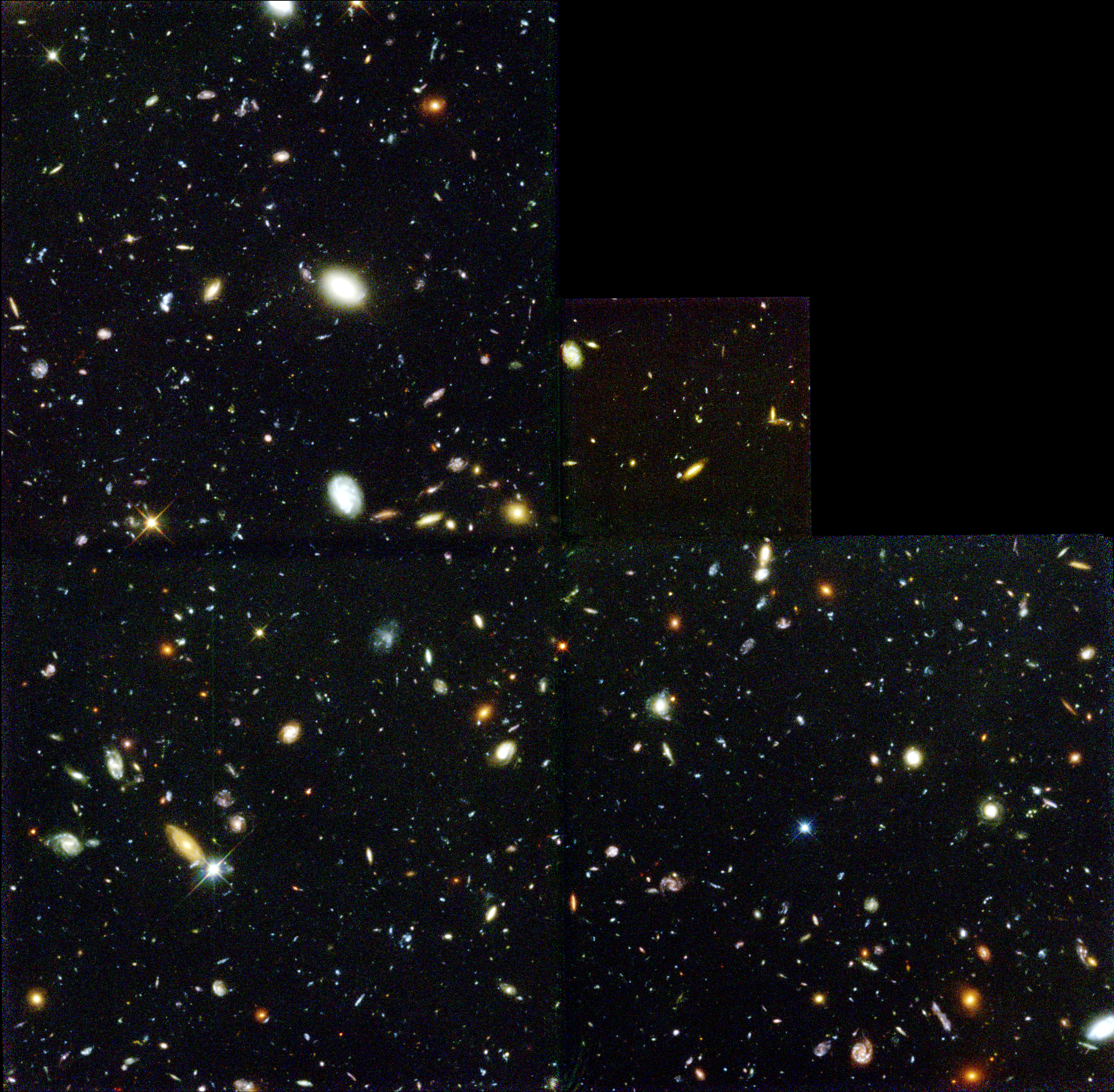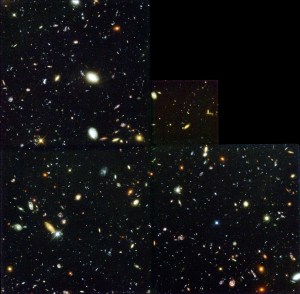
Hubble Deep Field
In 1995, the Hubble Space Telescope spent 10 straight days in a unique experiment, staring at a dark, seemingly empty patch of sky ― about the size of a pinhead held at arm's length ― near the Big Dipper. The goal was to see what, if anything, could be found there. The result was astounding: a collection of thousands of galaxies in various stages of evolution, a glimpse back in space and time that revealed a universe full of previously unrevealed wonders. The light from some of the farthest galaxies in the image traveled for 10 billion years to reach Earth. The field is a very small sample of the heavens, but it represents the typical distribution of galaxies in space. The number of galaxies visible in this image, originally estimated at 1,500, was later found to be around 3,000. Hubble took 342 exposures using different filters to create this image, which launched a series of deep field images that would reach farther and farther toward the horizon of the universe. For more information, visit: hubblesite.org/contents/news-releases/1996/news-1996-01.html
- X




























